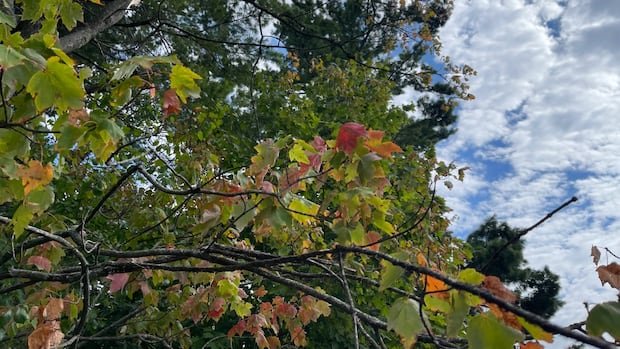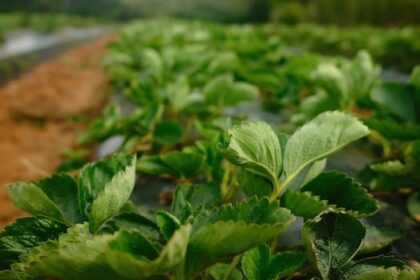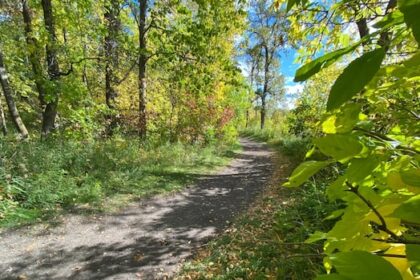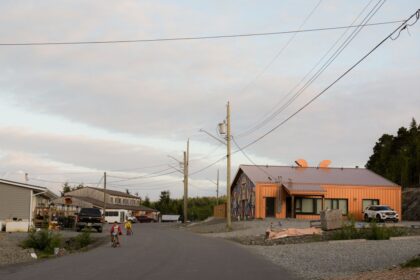New BrunswickIn some parts of the province you might notice early instances of fall colours. A historically dry summer has stressed some trees out to the point of getting rid of their leaves early.Lack of water causes tree leaves to change colour and drop earlier than usual Oliver Pearson · CBC News · Posted: Sep 06, 2025 5:00 AM EDT | Last Updated: 2 hours agoThis tree branch is showing orange, yellow, red and green leaves as it begins its fall transition. This tree is showing its colours in the first week of September on the UNB Fredericton campus. (Oliver Pearson/CBC)If fall is your favourite time of the year, you likely enjoy pumpkin spice, the cool air and fall colours.But as a result of New Brunswick’s particularly dry summer, one of those things has already started arriving.The vibrant colours that we enjoy through the season will reveal themselves sooner and leaves will fall quicker, according to Anthony Taylor, a forestry professor at the University of New Brunswick.”Normally we wouldn’t see autumn coloration begin to take place until well into September, late September, early October,” said Taylor. “This year, because of the severe drought conditions that we’ve been experiencing since July, we’re noticing some trees … beginning to change colour already.”For parts of New Brunswick, this summer was one of the driest on record, with total rainfall near half — or even less than half — of average. That has put stress on trees, especially in the province’s south, where the dry conditions send trees into a protective mode to conserve water.This is what causes an earlier-than-usual change in foliage patterns.Water is used for photosynthesis and to transport nutrients through the tree. When the tree doesn’t have enough water to carry out photosynthesis, it shuts down and begins absorbing chlorophyll, the compound that makes leaves green.WATCH | Some Fredericton trees are already showing their fall colours:Fall colours coming early this year because of dry summerNew Brunswick’s dry summer has some trees stressed out. The lack of water is causing leaves to change colour and fall earlier than usual. Loïc D’Orangeville, an adjunct professor at UNB, said the amount of water used by a tree’s leaves can’t be sustained during drought.”Leaves will use a lot of water. I mean, we’re talking hundreds of litres a day for mature hardwood trees. So what happens is there’s not enough water. Then the tension inside the tree starts to build up and it can create some pretty bad damage inside the tree,” said D’Orangeville. In a year without prolonged drought, the change in leaf colour is a protective reaction for when days get shorter and temperatures get cooler.”We see more and more of these anomalies where, from time to time, some years the leaves fall earlier than usual and that’s been seen in places where it’s typically hot and dry,” said D’Orangeville, who also teaches at Laval University.The changing colours this early in the season are indicative of the tree’s reaction to a lack of rainfall this summer, experts say. (Oliver Pearson/CBC)This summer’s drought shouldn’t be enough to kill mature trees but years of inadequate water and other stressors, like disease, could be enough.Taylor said some oak, maple and birch trees tend to be more resilient to drought while smaller trees can be more vulnerable.”If you outplanted some small seedlings or saplings this summer during that drought and you weren’t able to water them, they don’t have the reserves inside to necessarily get through the drought,” said Taylor.Anthony Taylor is a forestry professor at the University of New Brunswick. He says that small trees are particularly vulnerable in drought. (Aniekan Etuhube/CBC)That is something the City of Fredericton is keeping its eye on.Richard Hall is a forester for the city who has noticed the early leaf drop.”I think everybody’s seen it. We’ve certainly had calls around it, but it’s that early leaf drop or it’s that quick switch from the green to the brown, which is not typical in August,” he said.Hall said trees in an urban environment, like the city, are under more stress than in natural forests, which are cooler.The city is watering some of its young trees to give them the best chance to survive.Fredericton maintains a tree canopy of 67 per cent, which is the highest rate in Atlantic Canada, and has more than 20,000 trees within the city limits.Hall worries about losing some young trees but said they have historically been able to cope with drought.”These newly planted trees — and that’s really the first few years of that tree — to establish is pretty key for us. So yes, we may experience some increased mortality, but we’re hopeful that it’s not going to be terrible,” he said.The city runs an expanding tree planting program that puts about 500 trees in the ground each year, a number they hope to double starting this year.For 2025, the city planted 500 in the spring and will plant another 800 this fall, with most of the new trees going in along city trails.ABOUT THE AUTHOROliver Pearson is a reporter at CBC New Brunswick. He can be reached at oliver.pearson@cbc.ca
Trees showing their fall colours early after a hot, dry summer












